(A) Use a fairly good quality cotton
(B) as the thread is inserted in the needle’s eye
(C ) or nylon thread so that
(D) the strands do not unravel
DCAB
ACDB
ABCD
BCDA
The correct Answer is:B
ACDB
Similar Questions
A small sphere of mass m suspended by a thread is first taken aside so that the thread forms the right angle with the vertical and then released. Find:
(a) the total acceleration of the sphere and the thread tension as a function of θ, the angle of deflection of the thread from the vertical,
(b) the thread tension at the moment when the vertical component of the sphere's velocity is maximum,
(c) the angle θ between the thread and the vertical at the moment when the total acceleration vector of the sphere is directed horizontally.
View SolutionThe Fig. shows a device used to measure small twist in a thread. A plane mirror is suspended from a twist free thread. A light ray striking the mirror is reflected on to a screen placed at a distance D=1m from the mirror.
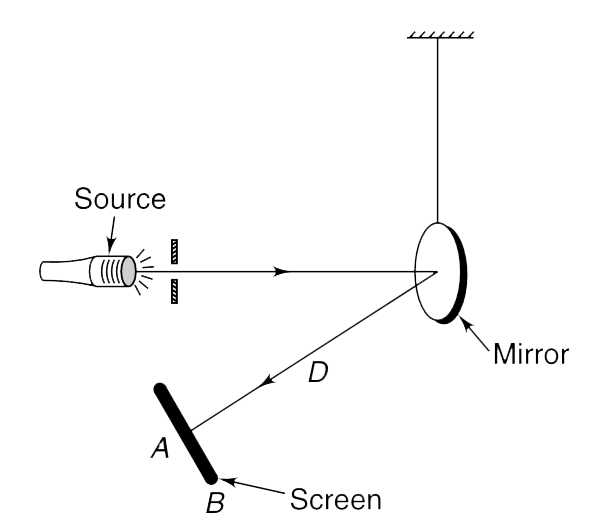
As the thread is twisted by an angle θ (so that mirror rotates by θ), the light spot on the screen moves from A to B such that AB=0.5cm. Find θ.
View Solution
Knowledge Check
Write the following steps in sequence to show that the like charges repel each other. (A) Rubbing both the glass rods with cotton cloth develops the same type of charge on them. (B) Take two glass rods and charge both the rods by friction. (C) Suspend both the glass rods with the help of two silk threads and bring them nearer. (D) The glass rods repel each other showing that like charges repel each other.
AABCDBDCBACBACDDBADCWrite the following steps in sequence to shows that the unlike charges attract each other.
(A) Take an ebonite rod and a glass and tie two silk threads so that they can be suspended.
(B) The glass rod and ebonite rod when brought near attract each other showing that charges attract each other.
Rub ebonite rod with woollen cloth and glass rod with silk cloth and suspend tem in air by holding silk threads.AACBBCBACBCADABC
The pulley of the system shown in Fig is massless and frictionless and thread and thread is inextensible Then horizontal surface over which block C is smooth while for all the remaining surface is μ
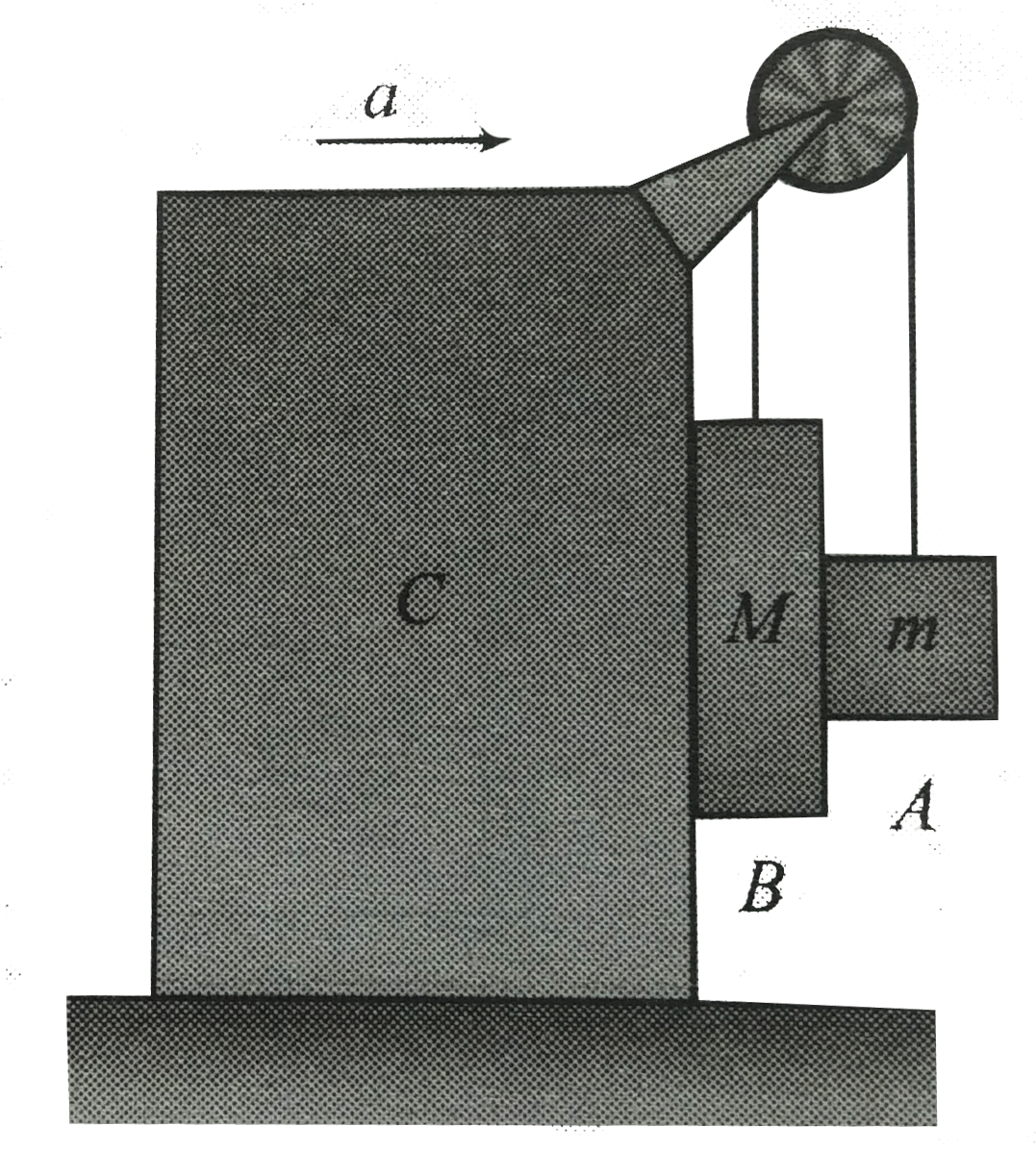
Calculate minimum acceleration a with which the system should be moved to the right so that suspented block A(mass m ) and B (mass M and M>m)can remain stationary relative to C
View SolutionA particle B of mass 5 kg is attached to a frictionless pivot A by a thread of length d = 0.2 m so that B hangs freely. At some instant of time a strong wind begins to apply a constant horizontal force F = 100 N to B, as a result it rotates about A in a vertical plane. Find the speed (in m/s) of B at the instant when the string is horizontal (g=10ms2)
View SolutionBelow the fixed end O of the insulating horizontal thread OB, there is a fixed charge A of Q=20μc. At the end B of the thread there is a small mass m carrying charge Q=20moc. The mass is released from the position shown and it is found to come to rest when the thread becomes vertical. Assume that the thread does not hit the fixed charge at A. [g=10m/s2] (a) Find mass m. (b) Find tension in the thread in the equilibrium position when the thread is vertical. (c) Is the equilibrium mentioned in (b) stable or unstable?
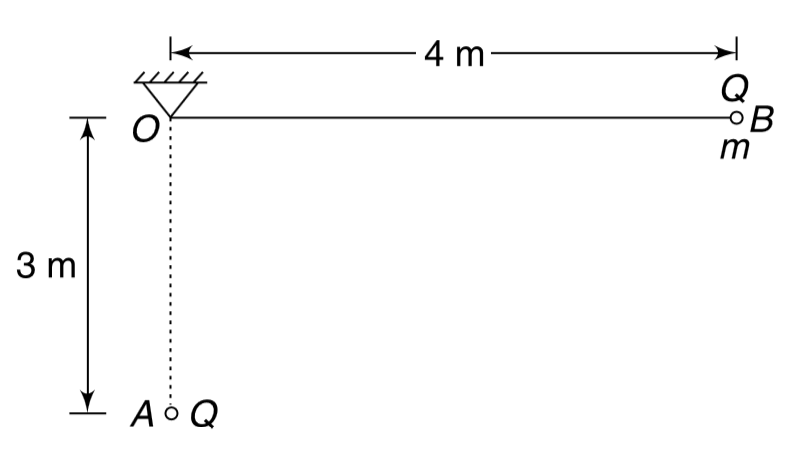
View SolutionA thread having linear charge density λ is in the shape of a circular arc of radius R subtending an angle θ at the centre.
(a). Find the electric field at the centre.
(b). Using the epression obtained in part (a) find the field at the centre if the thread were emicircular
(c). Find the field at centre using the expression obtained in part (a) for the case θ→0. Is the result justified?
(d). A thread having total charge Q (uniformly distributed is in the shape of a circular arc of radius R subtending an angle θ at centre. write the expression for the field at the center. Obtain the field whenθ→0. Make sure you understand the difference in case. (c) and (d).
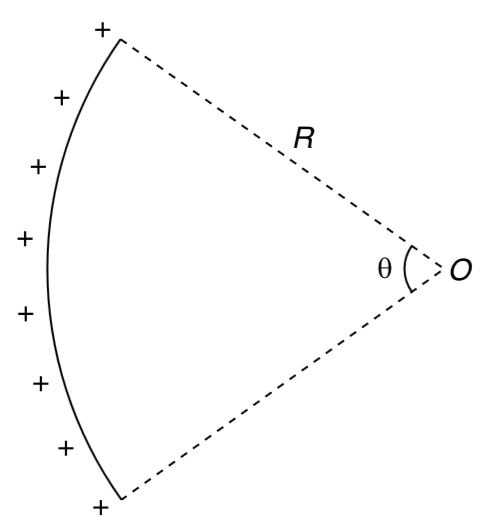
View SolutionA block A of mass m=5kg is attached with a spring having force constant K=2000Nm−1. The other end of the spring is fixed to a rough plane, inclined at 37∘ with horizontal and having coefficient of friction m=0.25. Block A is gently placed on the plane such that the spring has no tension. Then block A is released slowly. Calculate elongation of the spring when equilibrium is achieved. Now an inextensible thread is connected with block A and passes below pulley C and over pulley D, as shown in figure. Other end of the thread is connected with another block B of mass 3kg. Block B is resting over a table and thread is loose. If the table collapse suddenly and B falls freely through 80/9cm, the thread becomes taut, calculate combined speed of blocks at that instant, and maximum elongation of spring in the process of motion. (g=10ms−2).
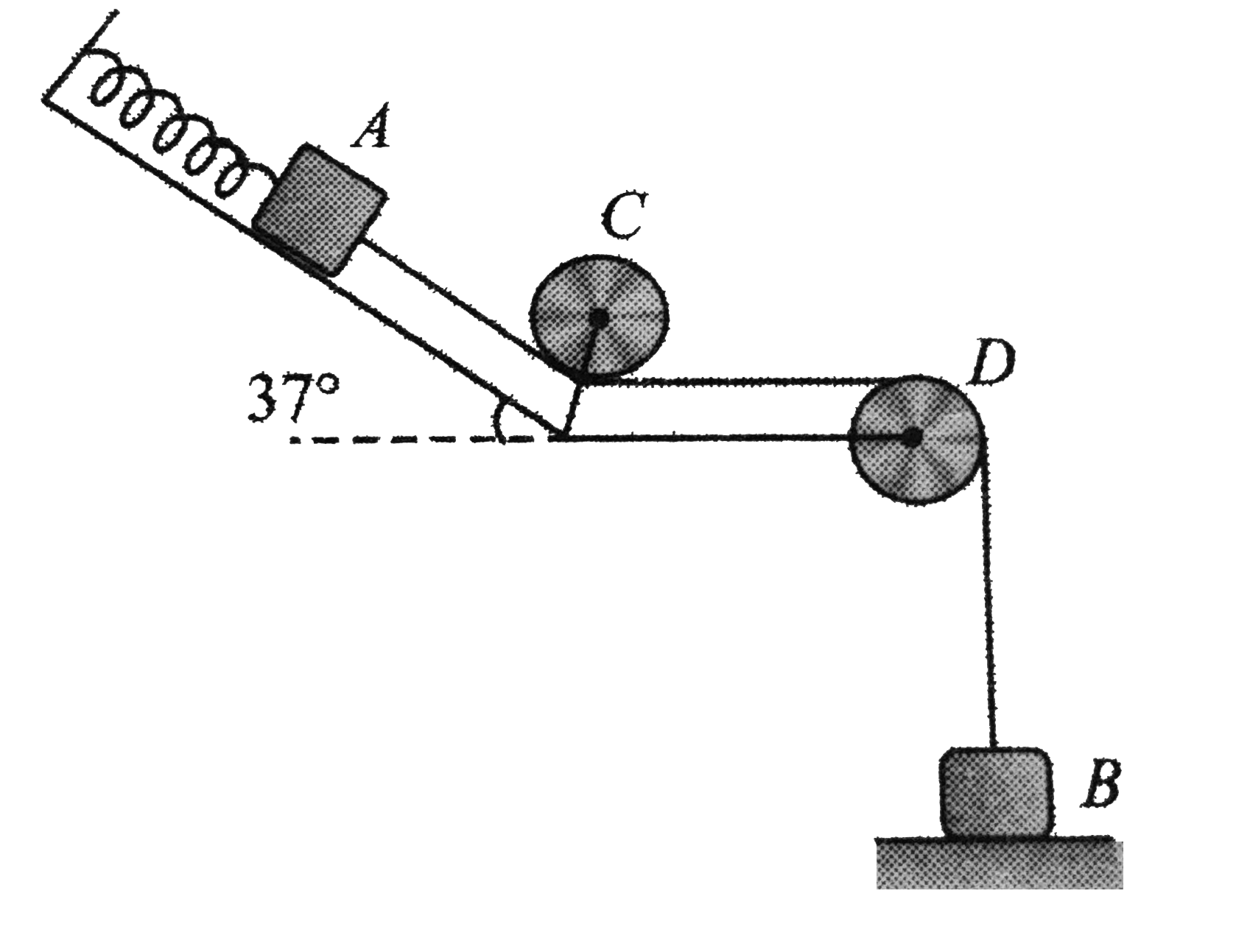
View Solution(a) A ball, suspended by a thread, swings in a vertical plane so that the magnitudes of its acceleration in the extreme and the lowest positions are equal. Find the maximum deflection of the thread with respect to the vertical.
( b) The kinetic energy of a particle moving in a circle of radius R depens on the distance covered as T=as2 , where 'a' is a constant. Find the magnitude of the force acting on the particle as a function of s.
View Solution
